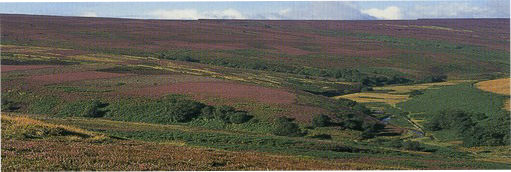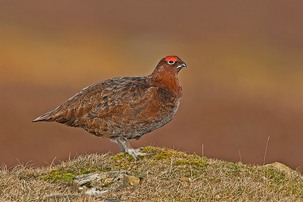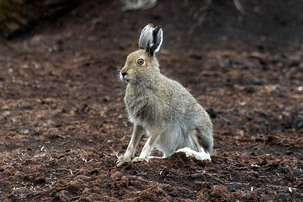

Biodiversity
Action
Plan

Features that support upland heathland species
The flora and fauna of upland heath is influenced by climate, altitude, aspect, slope, and management practices. It is largely the result of historic management through woodland and scrub clearance, grazing by livestock, failing or controlled, rotational strip-burning.
In the absence of intervention, the process of succession would lead to these areas becoming woodland with smaller areas of heath in glades formed under the grazing pressure of wild herbivores.
Modern management for this habitat for game management purposes is mainly designed to favour Red Grouse with strip burning. Mountain Hare may be supported by this approach however it is to the disadvantage of a wider range of species. Cloughs are mainly unmanaged and these zones often have a more varied range of species that could be supported more widely by less intensive management.
Upland heath Species in Barnsley
Birds: Red grouse, Merlin, Ring Ouzel, Curlew, Golden Plover and Dunlin, can be found on Barnsley’s Upland Heathland
It has the potential for recolonisation by Black Grouse, Hen Harrier and Twite.
Mammal: Mountain Hare is the characteristic mammal of upland heathland in the Dark Peak. Brown hare may be present as well as small mammals, stoat and weasel.
Reptiles: Common Lizard, and Adder, although there are no recent records of the latter.
Invertebrates: At least 40 species of insect feed on heather alone and upland heathland supports a wide range of invertebrates including dragonflies and bumblebees.
Invertebrate species include:
Bilberry Bumblebee, Green Tiger Beetle, Green Hairstreak Butterfly, Emperor Moth, Grey Mountain Carpet Moth Entephria caesiata, Heath Rustic Xestia agathina, Northern Dart Xestia alpicola subsp. alpina and Neglected Rustic Xestia castanea).
Plants
Common Heather or Ling, with Bilberry, Bell Heather and occasional Crowberry, Western Gorse and Juniper.
Upland Heathland Features
Upland heath in ‘favourable condition’ is generally structurally diverse, containing stands of dwarf shrubs at different stages of growth, including areas of mature heather. It is important to maintain as much structural diversity as possible in order to provide for species with widely differing requirements.
This structural diversity includes short and tall, and open and closed, vegetation. Dwarf shrubs should be seen as one heathland feature along with other features such as small areas of bare ground, grassy patches with some flowering plants and tall herbs, and scrub, if it does not become dominant or too widespread.
An important feature needed is shelter - provided by vegetation or indeed the shape of the land - to reduce wind speeds and create warmer microclimates.
Blanket bog and other mires, grassland, bracken, scrub, trees and woodland, freshwater and rock habitats frequently form intimate mosaics with heathland vegetation in upland situations. This habitat mosaic is important for biodiversity.

